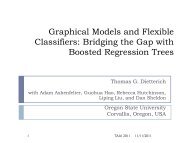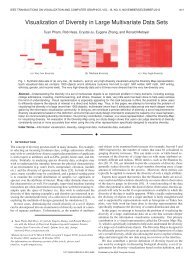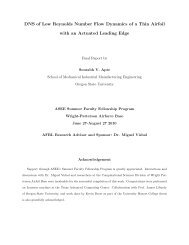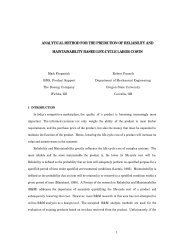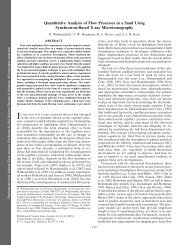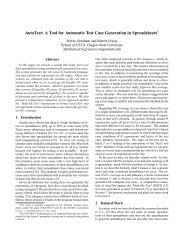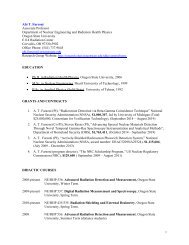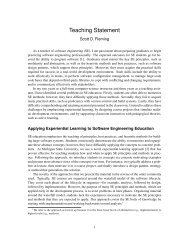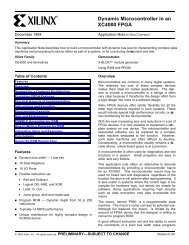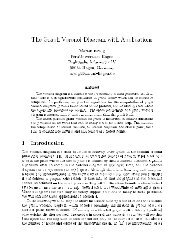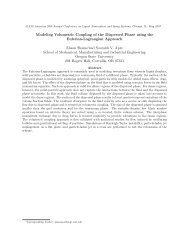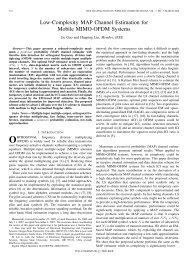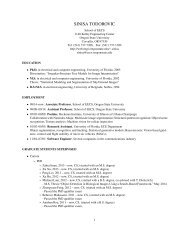Large-eddy Simulation of Realistic Gas Turbine Combustors
Large-eddy Simulation of Realistic Gas Turbine Combustors
Large-eddy Simulation of Realistic Gas Turbine Combustors
Create successful ePaper yourself
Turn your PDF publications into a flip-book with our unique Google optimized e-Paper software.
eattachment points, the trajectories <strong>of</strong> different particle sizes are accurately captured [9].<br />
It is important to note that accurate prediction <strong>of</strong> these flow features plays an important<br />
role in investigating swirling, turbulent flows in gas-turbine combustors. Figure (2) shows comparison<br />
with the experimental data <strong>of</strong> azimuthally averaged particle-phase mean and rms axial,<br />
swirl, and radial velocity at different cross-sections. Also shown are the mean and rms particle<br />
diameter distributions indicating good agreement. Important particle-dispersion characteristics<br />
are obtained from this simulation to further investigate swirling, particle-laden flows [9].<br />
It<br />
is also confirmed that LES together with the point-particle approach for dispersed phase can<br />
accurately predict swirling, separated flows for dilute-particle loadings.<br />
4.2 Validation <strong>of</strong> evaporation model and variable density formulation<br />
In order to validate the evaporation model and the variable density formulation, simulation <strong>of</strong> a<br />
coaxial non-swirling jet has been performed following the configuration used in the experiments<br />
<strong>of</strong> Sommerfeld & Qiu [22]. This experiment also is well documented with specified boundary<br />
conditions for both phases. For the liquid phase the inlet droplet size distribution and their<br />
correlation with droplet velocity are well-defined.<br />
The gas-phase temperatures are not high<br />
enough to produce spray flames.<br />
This isolates the droplet evaporation problem from spray<br />
breakup and combustion, and makes it suitable to validate the evaporation models.<br />
Figure (3) shows a snapshot <strong>of</strong> fuel mass fraction contours superimposed by scatter plot <strong>of</strong><br />
Isopropyl alcohol droplets in the symmetry plane (z = 0). Hot air at 373K is injected through<br />
the annulus and liquid droplets at 313K are injected along the central wall region according to<br />
the measured size-velocity correlations at x = 3 mm downstream <strong>of</strong> the wall [22]. The grid used<br />
consists <strong>of</strong> 1.5M hexahedral cells and around 0.75M particles are present in the computational<br />
domain at statistically stationary state. The droplets are injected near the inlet circular wall<br />
<strong>of</strong> cross-sectional radius R = 20 mm.<br />
The droplet velocity-size correlation depicts a conical<br />
spray with a spray angle <strong>of</strong> around 60 0 . The Reynolds number at inlet annulus is 21164 and<br />
the gas-phase inflow velocity is obtained by pre-computing a periodic annulus flow at same<br />
Reynolds number and mass-flow rate and storing instantaneous velocity pr<strong>of</strong>iles over 10 flow<br />
16



